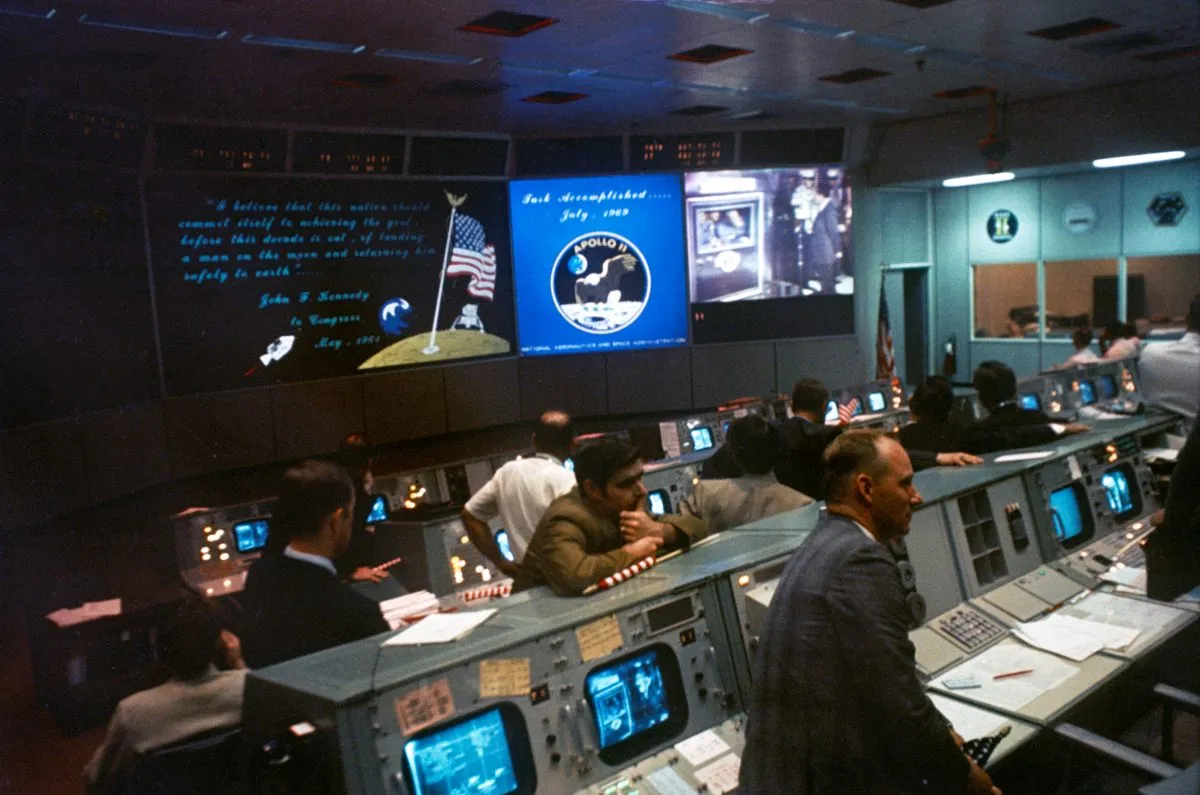Apollo 11's mission patch, showing an eagle flying over the surface of the Moon with Earth in the background, is for many people as famous as the Moon-landing mission itself.
Neil Armstrong’s famous words “the Eagle has landed” immortalised the lunar module that carried his crew to the Moon’s surface.
Strange as it may seem, the name of this craft came from the Apollo 11 mission’s official patch.
Patches originated in the US military, where air crews came up with their own designs to represent particular missions.
All the early astronauts were military men, so the practice went with them to NASA.
- Apollo 11: the story of the Moon landing
- Where did Apollo astronauts land on the Moon?
- Apollo Moon landing conspiracy theories crushed
By the time of Apollo 11, sophisticated designs were drawn up by professional artists and silk-screened onto non-flammable ‘beta cloth’.
The Apollo 11 patch was something of a departure, however. The crew opted to leave off their own names, to represent all of the ground staff involved in the mission.
The idea of an eagle originally came from Armstrong’s backup, Jim Lovell, but it was Michael Collins who appears to have been instrumental in the final design.
Collins recalled the moment in his 1974 autobiography Carrying The Fire: “Of course! What better symbol – eagles landed, didn’t they?”
The ideal image
Back at home, Collins leafed through a National Geographic book on birds and found the ideal image – a bald eagle, its wings partially folded, swooping down with its “landing gear extended”.
Collins traced the picture and sketched in the Moon’s surface behind it, adding a small Earth in the background.
He later confessed that he drew the Earth wrong – it should have been dark at the bottom and lit by sunlight at the top.
After that, the patch’s precise evolution is uncertain, although early sketches were prepared by Allen A Stevens of Rockwell International, a NASA contractor who designed most, if not all, prior Apollo patches.
His designs for Apollo 11 incorporate the names of the crew and the Roman numerals XI – in one version the eagle carries them in its talons.
The Roman numerals were dropped because Armstrong believed the number ‘11’ would be more easily understood around the world.

There was still something missing, however, and it was the crew’s simulator instructor, Tom Wilson, who came up with it.
“Why not an olive branch as a symbol of our peaceful expedition? Beautiful! Where do eagles carry olive branches? In their beaks, naturally,” said Collins.
After he’d sketched in the olive branch, Collins, together with Aldrin and Armstrong, picked a naturalistic black for the sky, with blue and gold around the edge.
NASA illustrator James R Cooper finished the artwork, and the crew sent it to Washington to be rubber-stamped.
Approval, however, wasn’t forthcoming.
“The eagle’s powerful talons, extended stiffly below him, were unacceptable. It was too hostile, too warlike,” said Collins.
The solution was simply to switch the olive branch to the eagle’s claws, although Collins wasn’t happy with the finished result. He thought the bird looked a little uncomfortable.
Today, original mission patches are extremely valuable.
Beta cloths flown to the Moon can fetch $20,000 at auction, while even embroidered patches worn by ground crew and given out as gifts sell for several hundred dollars.
And what of the original artwork? The beautiful eagle painting was by Walter A Weber, the National Geographic Society’s staff artist.
It was first published in the July 1950 issue of National Geographic magazine and was later flipped horizontally for the book owned by Collins.
The patch flipped it again, so the eagle soars from right to left – just as in Weber’s original painting.
This article originally appeared in the Man on the Moon special edition magazine.
